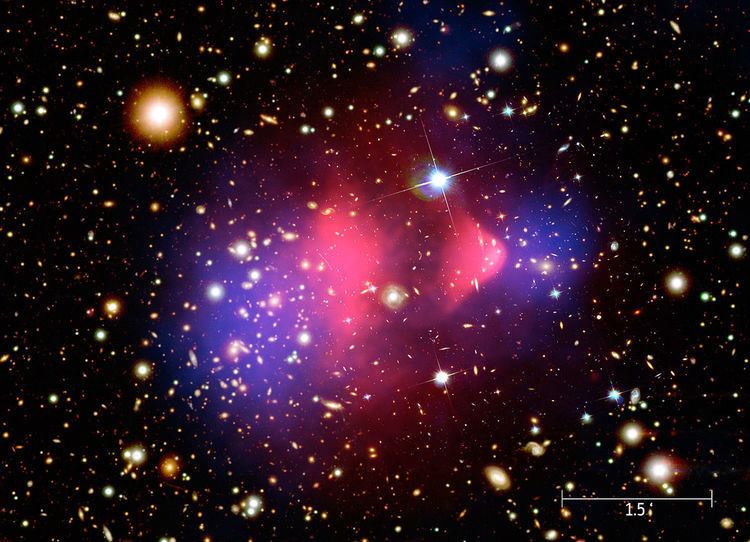 | ||
In cosmology and physics, cold dark matter (CDM) is a hypothetical form of dark matter whose particles moved slowly compared to the speed of light (the cold in CDM) since the universe was approximately one year old (a time when the cosmic particle horizon contained the mass of one typical galaxy); and interact very weakly with ordinary matter and electromagnetic radiation (the dark in CDM). It is believed that approximately 84.54% of matter in the Universe is dark matter, with only a small fraction being the ordinary baryonic matter that composes stars, planets and living organisms.
Contents
History
The theory was originally published in 1982 by three independent groups of cosmologists; James Peebles at Princeton, J. Richard Bond, Alex Szalay and Michael Turner; and George Blumenthal, H. Pagels and Joel Primack. An influential review article in 1984 by Blumenthal, Sandra Moore Faber, Primack and British scientist Martin Rees developed the details of the theory.
Structure formation
In the cold dark matter theory, structure grows hierarchically, with small objects collapsing under their self-gravity first and merging in a continuous hierarchy to form larger and more massive objects. In the hot dark matter paradigm, popular in the early 1980s, structure does not form hierarchically (bottom-up), but rather forms by fragmentation (top-down), with the largest superclusters forming first in flat pancake-like sheets and subsequently fragmenting into smaller pieces like our galaxy the Milky Way. Predictions of the cold dark matter paradigm are in general agreement with astronomical observations.
Lambda CDM model
Since the late 1980s or 1990s, most cosmologists favor the cold dark matter theory (specifically the modern Lambda-CDM model) as a description of how the Universe went from a smooth initial state at early times (as shown by the cosmic microwave background radiation) to the lumpy distribution of galaxies and their clusters we see today — the large-scale structure of the Universe. The theory sees the role that dwarf galaxies played as crucial, as they are thought to be natural building blocks that form larger structures, created by small-scale density fluctuations in the early Universe.
Composition
Dark matter is detected through its gravitational interactions with ordinary matter and radiation. As such, it is very difficult to determine what the constituents of cold dark matter are. The candidates fall roughly into three categories:
Challenges
Several discrepancies between the predictions of the particle cold dark matter paradigm and observations of galaxies and their clustering have arisen:
Some of these problems have proposed solutions but it remains unclear whether they can be solved without abandoning the CDM paradigm.
